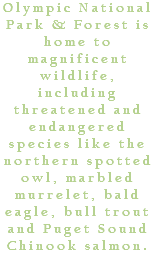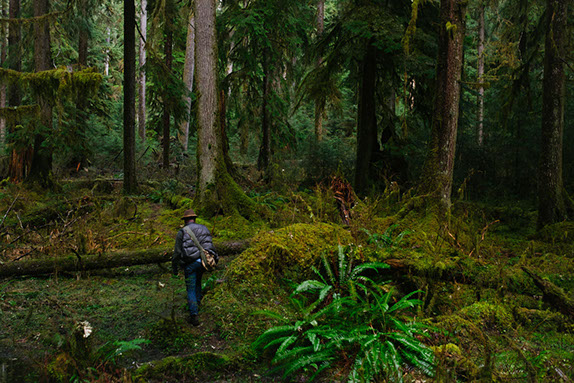.png?crc=93572169)





The United Nations Educational, Scientific and Cultural Organization (UNESCO) seeks to encourage the identification, protection and preservation of cultural and natural heritage around the world considered to be of outstanding value to humanity. This is embodied in an international treaty called the Convention concerning the Protection of the World Cultural and Natural Heritage, adopted by UNESCO in 1972. Olympic National Park was ccepted as a biosphere reserve in June 1976, and as a World Heritage site in 1981.
Olympic National Park features spectacular coastline, scenic lakes, majestic mountains and glaciers, and magnificent temperate rain forest. It is the lowest latitude in the world in which glaciers form at relatively low elevation. Its relative isolation and highly varied rainfall have produced complex and varied life zones. Olympic contains a great wealth of geological formations. The rocky islets along the coast are remnants of a continuously receding and changing coastline. The biological evolution, ecological variety and sheer splendor of Olympic National Park make it a special place.
Olympic National Park is of remarkable beauty, and is the largest protected area in the temperate region of the world that includes in one complex ecosystems from ocean edge through temperate rain forest, alpine meadows and glaciated mountain peaks. It contains one of the world’s largest stands of virgin temperate rain forest includes many of the largest coniferous tree species on earth.
The park’s varied topography from seashore to glacier, affected by high rainfall has produced complex and varied vegetation zones, providing habitats of unmatched diversity on the Pacific coast. The coastal Olympic rainforest reaches its maximum development within the property and has a living standing biomass which may be the highest anywhere in the world. The park’s isolation has allowed the development of endemic wildlife, subspecies of trout, varieties of plants and unique fur coloration in mammals, indications of a separate course of evolution.
Olympic National Park is isolated from other mountain ranges and surrounded by the waters of the Pacific Ocean and Puget Sound; this isolation has allowed the development of endemic species, including Olympic marmot, 4 subspecies of other mammals, 2 subspecies of trout, and 12 species or varieties of plant. 11 major river systems drain the Olympic mountains, offering some of the best habitat for anadromous fish species (such as salmon that live their lives in the sea and migrate to a freshwater river to spawn) in the country.
Reflecting the varied topography (from seashore to glacier) and the varied rainfall, the vegetation zones in the site are complex and varied. The park is divided into two segments: a mountainous core and a separate coastal strip. The rugged features of Olympic National Park are the result of the collision of drifting continental plates.
The area contains a great wealth of geological formations, affected by high rainfall on the west and low rainfall on the east. The lighter shales, sandstones and basalts, which had been violently sheared and squeezed during this tectonic movement, bobbed up like a cork, forming a dome some 95 km in diameter. Deep valleys and canyons were eroded out of this dome and glaciers sculpted the craggy peaks and beautiful cirques to form the spectacular landscape which characterizes the modern Olympics.
The mountains contain about 60 active glaciers; the area is unique in because it is the lowest latitude in the world in which glaciers begin at an elevation lower than 2,000 m and exist below 1,000 m. Glacier-clad peaks interspersed with extensive alpine meadows are surrounded by an extensive old growth forest, among which is the best example of intact and protected temperate rainforest in the Pacific Northwest.
The coastal strip of the site stretches along 80 km of wilderness beach, characterized by rocky headlands, log-strewn beaches, and a wealth of intertidal life; rocky islets along the coast are remnants of a continuously receding, changing coastline, and the arches, caves and buttresses are evidence of the continuous battering of the waves. Tide pools are filled with hundreds of species of invertebrate life, and seals, sea lions, sea otters and several species of whale are often seen in the waves and around the offshore islands.
Hear Our Olympics from NPCA on Vimeo.
“The logic is simple; if a loud noise, such as the passing of an aircraft, can impact many square miles, then a natural place, if maintained in a 100 percent noise-free condition, will also impact many square miles around it.”
The Quietest Place in America is Becoming a War Zone.














